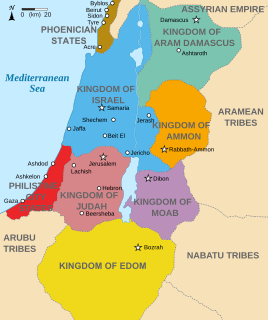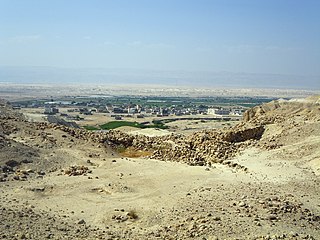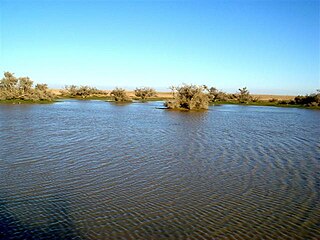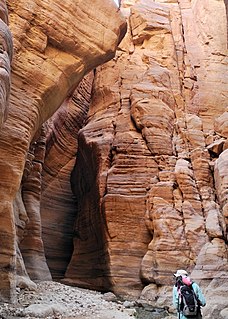According to the Bible, Admah was one of the five cities of the Vale of Siddim. It was destroyed along with Sodom and Gomorrah. It is supposed by William F. Albright to be the same as the "Adam" of Joshua 3:16. The location of Admah is unknown, although Bryant G. Wood a proponent of the southern theory for the Cities of the Plain identified the site with Numeira, but later changed it to Khirbat al-Khanazir Jordan, although it was only a cemetery during the Bronze Age and proponents of the northern theory for the Cities of the Plain identify the site with Tel Nimrin, Jordan.

Moab is the name of an ancient Levantine kingdom whose territory is today located in the modern state of Jordan. The land is mountainous and lies alongside much of the eastern shore of the Dead Sea. The existence of the Kingdom of Moab is attested to by numerous archaeological findings, most notably the Mesha Stele, which describes the Moabite victory over an unnamed son of King Omri of Israel, an episode also noted in 2 Kings 3. The Moabite capital was Dibon. According to the Hebrew Bible, Moab was often in conflict with its Israelite neighbours to the west.

Lot was a man in the biblical Book of Genesis, chapters 11–14 and 19. Notable events in his life include his journey with his uncle Abram (Abraham); his flight from the destruction of Sodom and Gomorrah, during which Lot's wife became a pillar of salt; and his being intoxicated by his daughters so that they could have sexual intercourse with him and ensure their family would have descendants.

Ein Gedi, also spelled En Gedi, meaning "spring of the kid", is an oasis, an archeological site and a nature reserve in Israel, located west of the Dead Sea, near Masada and the Qumran Caves. Ein Gedi, a kibbutz, was established nearby in 1954.

Tel Arad, in Arabic Tell 'Arad, is an archaeological tell, or mound, located west of the Dead Sea, about 10 kilometres west of the modern Israeli city of Arad in an area surrounded by mountain ridges which is known as the Arad Plain. The site is divided into a lower city and an upper section on a hill.
The year 1924 in archaeology involved some significant events.
The year 1965 in archaeology involved some significant events.
Bryant G. Wood is an American biblical archaeologist and young earth creationist. Wood is known for arguing that the destruction of Jericho could be accorded with the biblical literalist chronology of c. 1400 BC. This date is some 150 years later than the accepted date of c. 1550 BC, first determined by Kathleen Kenyon and subsequently confirmed with a variety of methods including radiocarbon dating.

Zoara, the biblical Zoar, previously called Bela, was one of the five "cities of the plain" – a pentapolis at that time of Abram or Abraham named later, it was a highly fertile valley apparently located along the lower Jordan Valley and the Dead Sea plain and mentioned in the Book of Genesis. It was said to have been spared the "brimstone and fire" which destroyed Sodom and Gomorrah in order to provide a refuge for Lot and his daughters. It is mentioned by Josephus; by Ptolemy ; and by Eusebius and Saint Jerome in the Onomasticon.

Bab edh-Dhra is the site of an Early Bronze Age city located near the Dead Sea, on the south bank of Wadi Kerak with dates in the EB IB, EB II, EB III and EB IVA. Bab edh-Dhra was discovered in 1924 on an expedition led by William F. Albright.
Trinity Southwest University (TSU) is an unaccredited evangelical Christian institution of higher education with an office in Albuquerque, New Mexico. Principally a theological school that encompasses both the Bible college and theological seminary concepts of Christian education, it offers distance education programs and degrees in Biblical Studies, Theological Studies, Archaeology & Biblical History, Biblical Counseling, Biblical Representational Research, and University Studies.

Wadi al-Batin is an intermittent river in Saudi Arabia, Iraq, and Kuwait. It is the lowest and final section of Wadi al-Rummah. It runs 45 mi (72 km) in a northeast–southwest direction through the Al-Dibdibah plain and has been recognized since 1913 as the border between Kuwait and Iraq.

Sodom and Gomorrah were two legendary biblical cities destroyed by God for their wickedness. Their story parallels the Genesis flood narrative in its theme of God's anger provoked by man's sin. They are mentioned frequently in the prophets and the New Testament as symbols of human wickedness and divine retribution, and the Quran also contains a version of the story about the two cities. The legend of their destruction may have originated as an attempt to explain the remains of third-millennium Bronze Age cities in the region, and subsequent Late Bronze Age collapse.

The Battle of the Vale of Siddim, also often called the War of Nine Kings or the Slaughter of Chedorlaomer, is an event in the Hebrew Bible book of Genesis 14:1–17 that occurs in the days of Abram and Lot. The Vale of Siddim was the battleground for the cities of the Jordan River plain revolting against Mesopotamian rule.
Zahrat adh-Dhraʻ 2 or ZAD 2 is an early Neolithic archeological site 1 mile (1.6 km) north of the village of edh-Dhra on the Lisan Peninsula, in modern-day Jordan.
Keith Norman Schoville is professor emeritus at the University of Wisconsin–Madison, specializing in ancient languages.

Wadi Numeira is a Wadi in Jordan that is known for its deep gorge cut through the sandstone. It gives its name to the Bronze Age ruins located at its mouth with the Dead Sea. The Wadi also sometimes nicknamed Petra with water.

Tell el-Hammam is an archaeological site in Jordan, in the eastern part of the lower Jordan Valley close to the mouth of the Jordan River. The site has substantial remains from the Chalcolithic, Early, Intermediate and Middle Bronze Age, and from Iron Age II. There are different attempts at identifying the site with a biblical city.

Nancy L. Lapp is an American archaeologist and biblical scholar who has worked on a number of sites in Jordan and Palestine, alongside her husband, Paul Lapp. After her husband's untimely death in 1970, she dedicated herself to publishing all of their excavation reports, an immense task which is still ongoing. Lapp became curator of the Pittsburgh Theological Seminary's Museum of Near Eastern Archaeology in 1970, and in 2000 became Curator Emerita. She also currently serves as a Trustee Emerita of the American Center of Oriental Research (ACOR) in Amman, Jordan, to whom she has donated an expansive collection of photographs documenting her and Paul's travels and archaeological expeditions.
Alexis Mallon (1875–1934), more commonly known as Père Mallon, was a French Jesuit priest and archaeologist. He founded the Pontifical Biblical Institute in Jerusalem and made important early contributions to the study of the prehistory of the Levant with his excavations at Teleilat el Ghassul (1929–1934).













